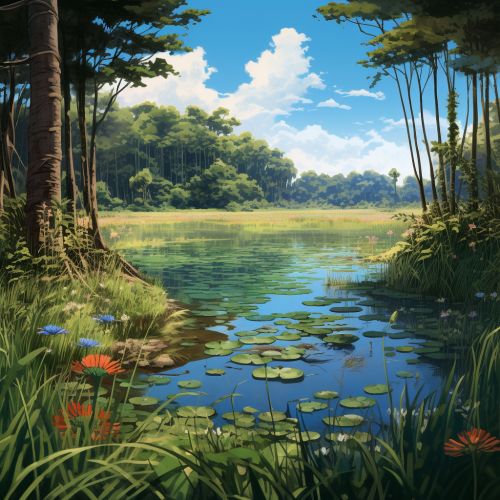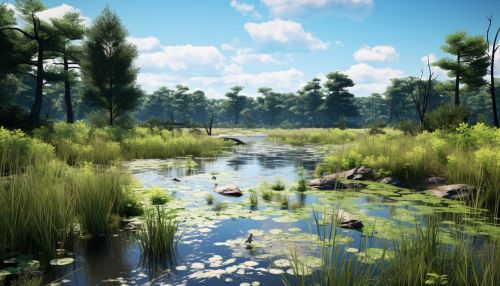Wetland
Introduction
Wetlands are unique ecosystems characterized by their water-saturated soils and distinctive vegetation. They play a crucial role in the global water cycle, biodiversity conservation, and climate change mitigation. Wetlands can be found in every climatic zone, from the tropics to the tundra, and in various topographic contexts, including coastal areas, mountains, and inland regions.


Types of Wetlands
Wetlands can be classified into several types based on their hydrology, vegetation, and soil characteristics. The primary types include marshes, swamps, bogs, and fens.
Marshes
Marshes are wetlands that are frequently or continually inundated with water. They are characterized by emergent soft-stemmed vegetation adapted to saturated soil conditions. Marshes can be found in both freshwater and saltwater environments.
Swamps
Swamps are wetlands dominated by woody plants, such as trees and shrubs. They can occur in freshwater or saltwater environments and are often found near rivers or in low-lying areas where groundwater accumulates.
Bogs
Bogs are a type of wetland that accumulates peat, a deposit of dead plant material. They are usually formed in colder regions under conditions of high rainfall and low evaporation, leading to the accumulation of water and the growth of specific types of moss, particularly sphagnum.
Fens
Fens are peat-accumulating wetlands that receive nutrients from sources other than precipitation: usually from upslope sources through drainage from surrounding mineral soils and groundwater movement. Fens differ from bogs because they are less acidic and have higher nutrient levels, so they can support a much more diverse plant and animal community.
Ecological Importance
Wetlands provide numerous ecological services that are beneficial to humans and the environment. These include water purification, flood control, carbon sequestration, and wildlife habitat provision.
Water Purification
Wetlands act as natural water filters. When runoff passes through a wetland, the wetland's vegetation and microorganisms absorb excess nutrients, sediment, and pollutants, improving the quality of the water.
Flood Control
Wetlands function as natural sponges, absorbing and storing excess rainfall and reducing flood peaks. This capacity to retain water also helps to maintain stream flows during dry periods.
Carbon Sequestration
Wetlands, particularly peatlands, are significant carbon sinks, storing more carbon per unit area than any other ecosystem, including forests. This carbon sequestration capacity plays a crucial role in mitigating climate change.
Wildlife Habitat
Wetlands provide habitat for a wide variety of species, including numerous rare and endangered species. They are particularly important for birds as breeding sites, stopover sites during migration, and for feeding.
Threats and Conservation
Despite their ecological importance, wetlands are among the most threatened ecosystems globally due to human activities such as drainage for agriculture, urban development, pollution, and climate change.
Drainage for Agriculture
Many wetlands have been drained to create farmland. This not only destroys the wetland ecosystem but also releases the carbon stored in the wetland soils, contributing to climate change.
Urban Development
Urban development often leads to the destruction of wetlands, as they are filled in to create land for buildings and infrastructure. This loss of wetlands increases the risk of flooding and reduces biodiversity.
Pollution
Wetlands are often polluted by runoff from agriculture and urban areas, which can lead to eutrophication and the loss of biodiversity.
Climate Change
Climate change poses a significant threat to wetlands. Rising sea levels can lead to the loss of coastal wetlands, while changes in rainfall patterns can affect the hydrology of inland wetlands.
